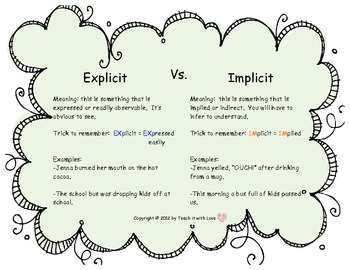Lesson plan !
1- FLASHBALL CHALLENGE! 30min
Introduce yourself / Ask 1 question / Answer / Storycubes
2- BAC INFO!
3- ENGLISH LIT INTRO
4- VIDEO CHALLENGE – WALL – E – LVO – 1h
Notion?
Teamwork
Introduce yourself / Ask 1 question / Answer / Storycubes
Directions:
TIME MARKERS: First / Once upon a time / There was once … / then / so / suddenly / But .. As a result … / consequently … / meanwhile … / Unfortunately … / In the end…
Problems:
Solutions
KEY CONCEPTS:
‘WTF’ > comment from the external point of view of the narrator > extradiegetic, not speaking from within the world of the novel or excluding yourself from the creative process of telling the story.
‘This activity is either too hard or too confusing and doesn’t take the individual into account’ : working as a team include some compromise but improvising details of a story can help you add our personal touch to an otherwise collaborative process.
I disagree / this story doesn’t make sense at all ! > maybe the character can wake up and all this was just a dream. Framed narrative technique : literary technique that sometimes serves as a companion piece to a story within a story,
Explicit facts: describe what you see. 
Implicit elements: explain what it evokes
Using elements you saw as symbols in the story is a way to give a universal dimension to your story.
Ex; YOU SEE : Coffee / poo > YOU THINK: breakfast and shitty day ahead..
Your story will be about a shitty day that everyone can relate to..


PIctures from https://classclassyesyes.com/
Watch the short film and remind each minions what rule they SHOULD / MUST / HAVE T0 follow !
Watch a scene from the film School of Rock by Richard Linklater, 2003.
Watch a scene from the film Detachment by Tony Kaye, 2012.
EXTRA video to get gold stars !!
Find 4 new rules!
Class documents!
Parody of strict school / private school / military / pension / US campus> to promote alternative school like Microlycée
All the troubles that could destroy students.
The Academy of DESPAIR / The Desperate Students
school bullying + gossiping + intimidation
lack of support from teachers / teaching staff
November 24th, 2014.
HW for Wednesday 26th
Read the text ‘Little Rock Nine Crisis’ + find vocab and be ready for teamwork!
UNIT 2 – THE COLOR LINE
>> The role of women in the struggle for equality.
HW – CO. NPR Claudette Colvin, the other Rosa Parks.
http://www.npr.org/templates/story/story.php?storyId=101719889
Claudette Colvin
Compared to Rosa Parks?
BUT
Inspired by?
Media strategies?
Segregation anecdote?
Philip Hoose?
Conclusion?
Whereas = tandis que
CO – Correction / NPR – One of the Little Rock Nine Looks Back!
http://www.npr.org/templates/story/story.php?storyId=14091050
Little Rock = city in Arkansas in the US.
Little Rock High School = former / previously white-only school.
The ‘Little Rock Nine’ = first 9 Black students to attend Little Rock High School in the town of Little Rock in Arkansas.
METHOD
1- KEY WORDS
Type of doc & voices > report / interview 1 presenter / 1 reporter 1 governor 1 old woman
WHEN 1957 – September 4th – 50 years ago
WHERE Arkansas – high school
WHO Elizabeth – 65 – Black – White – governor – guard – demonstrators – 9 Black students
WHAT racial – segregation – integration – attend school – outside – turned away
2 – DETAILS
About Elizabeth? White clothes – sunglasses – outside … – nightmare
About the people? White students – governor – good order – peace in the community
About the context? Desegregation – recording – E’s account 50 years after the event
About the anecdote? Elizabeth was supposed to go with the group but there was confusion and she took a city bus alone so she was stopped / turned away by the guard and ‘subsequently followed by angry demonstrators’
3- COHERENCE AND MORE
radio show > context given by presenter > Alex / journalist & reporter is going to talk about 1 of the 9 students > recording of Arkansas governor / bad quality > interview of Elizabeth > journalist’s comments
Elizabeth is moved / sad / it’s difficult for her to tell about what happened
The governor wanted peace but he sparkled an emergency situation. The guard was here to protect the Black students but in the end they turned Elizabeth away.
The radio show is celebration the 50 anniversary of this event, 50 years later in a special ‘desegregation series’.
I’m not sure where I’ll be teaching next year, but I need to work on something to keep myself busy. So I’ve decided I might as well prepare some documents and units just in case Ill be teaching in Arpajon again in September.
The curriculum has changed in terms of class contents, general topics and final exam.
So first I’m going to try and sum up in French the official info I gathered on the net, then plan some units and add docs little by litttle. Say this is more like a work in progress or think tank rather than actual final lessons.
I’m focusing first on the new BAC and Langue Approfondie (LA) as well as Littérature en Langue Etrangère (LELE) course contents but I won’t forget to add some recomandations for those who want to revise a bit before the school year starts again!
Classroom materials and teaching tips from TEFL lifer Alex Case. See the drop-down menus under the photo for thousands of photocopiables and articles, and for how to support TEFLtastic
acta est fabula
Cartoons by John Atkinson. ©John Atkinson, Wrong Hands
illustrator Russell Jackson
things and not things.
Inspirational & creative ramblings of a self-confessed geek - Things I like, things I find and things I’m doing.
My images are different, like your brand needs to be.
where Emily and books collide